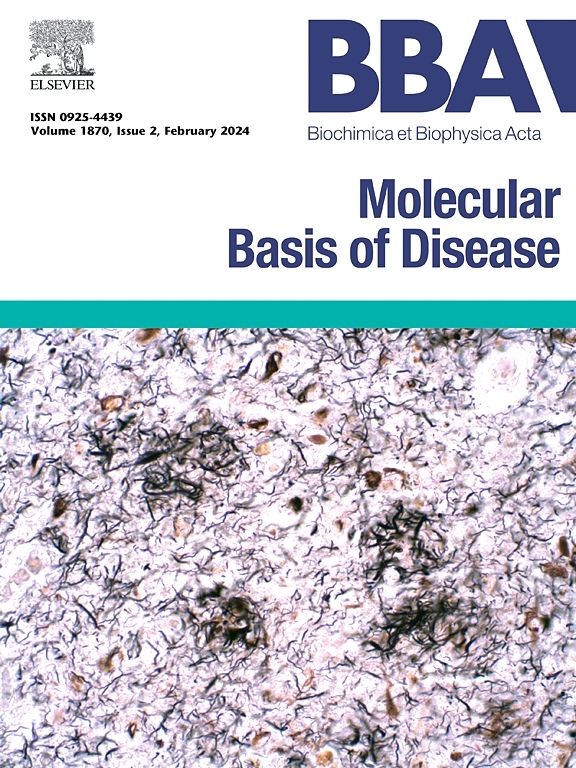The function of necroptosis in liver cancer
IF 4.2
2区 生物学
Q2 BIOCHEMISTRY & MOLECULAR BIOLOGY
Biochimica et biophysica acta. Molecular basis of disease
Pub Date : 2025-04-10
DOI:10.1016/j.bbadis.2025.167828
引用次数: 0
Abstract
Liver cancer is one of the most lethal cancers, and apoptosis resistance is a major obstacle contributing to chemotherapy failure in liver cancer treatment. Inducing cancer cell death by bypassing the apoptotic pathway is considered a promising approach to overcome this problem. Necroptosis is a non-caspase-dependent regulated mode of cell death mainly mediated by receptor-interacting protein kinase 1 (RIPK1), RIPK3, and mixed lineage kinase domain-like (MLKL) protein, and the utilization of necroptosis for treating hepatocellular carcinoma (HCC) also offers a new hope for addressing liver cancer in the clinic. In this paper, the role of necroptosis in HCC as well as the effect on differentiation of liver cancer are reviewed. We also comparatively analyze the relationship among necroptosis, apoptosis, and necrosis, as well as summarize the characteristics and functions of key proteins involved in this pathway. The bidirectional regulation of necroptosis and the mitochondrial machinery within this pathway deserve attention.
坏死上睑下垂在肝癌中的作用
肝癌是最致命的癌症之一,细胞凋亡耐药是导致肝癌化疗失败的主要障碍。通过绕过凋亡途径诱导癌细胞死亡被认为是克服这一问题的一种有希望的方法。坏死坏死是一种非caspase依赖性的细胞死亡调控方式,主要由受体相互作用蛋白激酶1 (RIPK1)、RIPK3和混合谱系激酶结构域样蛋白(MLKL)介导,利用坏死坏死治疗肝细胞癌(HCC)也为临床治疗肝癌提供了新的希望。本文就坏死性上睑下垂在HCC中的作用及对肝癌分化的影响作一综述。我们还比较分析了necroptosis、apoptosis和necrosis三者之间的关系,并总结了该通路中涉及的关键蛋白的特点和功能。在这一途径中,坏死性下垂的双向调节和线粒体机制值得关注。
本文章由计算机程序翻译,如有差异,请以英文原文为准。
求助全文
约1分钟内获得全文
求助全文
来源期刊
CiteScore
12.30
自引率
0.00%
发文量
218
审稿时长
32 days
期刊介绍:
BBA Molecular Basis of Disease addresses the biochemistry and molecular genetics of disease processes and models of human disease. This journal covers aspects of aging, cancer, metabolic-, neurological-, and immunological-based disease. Manuscripts focused on using animal models to elucidate biochemical and mechanistic insight in each of these conditions, are particularly encouraged. Manuscripts should emphasize the underlying mechanisms of disease pathways and provide novel contributions to the understanding and/or treatment of these disorders. Highly descriptive and method development submissions may be declined without full review. The submission of uninvited reviews to BBA - Molecular Basis of Disease is strongly discouraged, and any such uninvited review should be accompanied by a coverletter outlining the compelling reasons why the review should be considered.

 求助内容:
求助内容: 应助结果提醒方式:
应助结果提醒方式:


